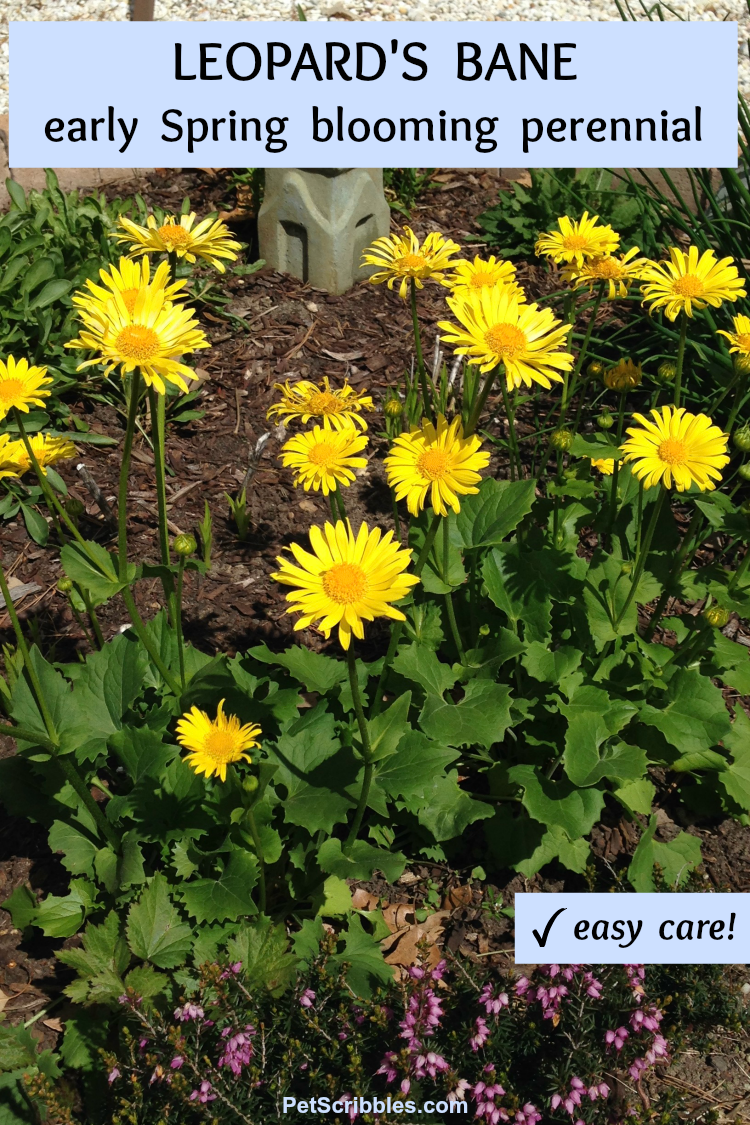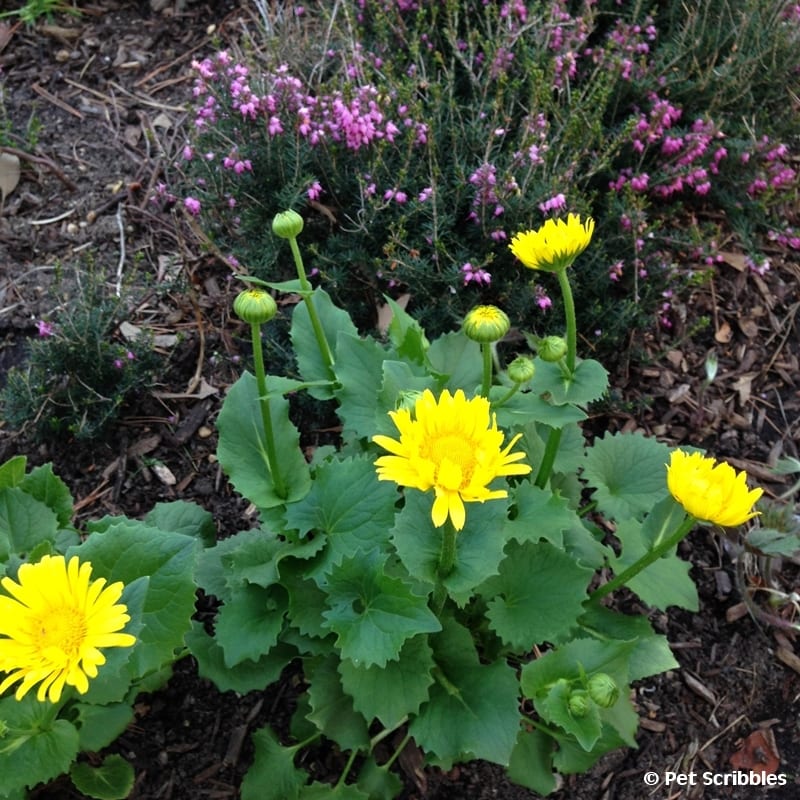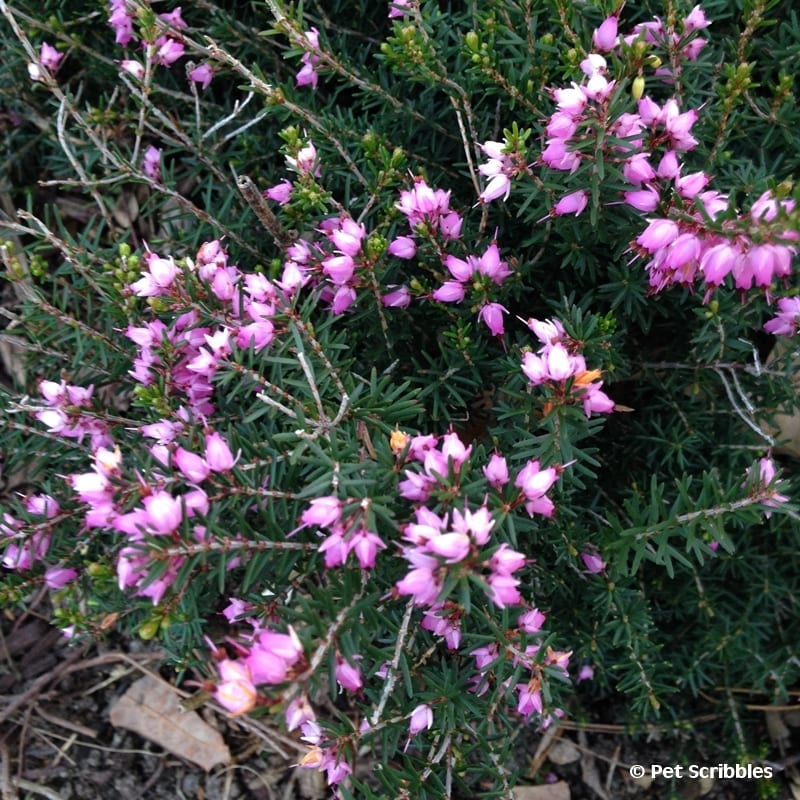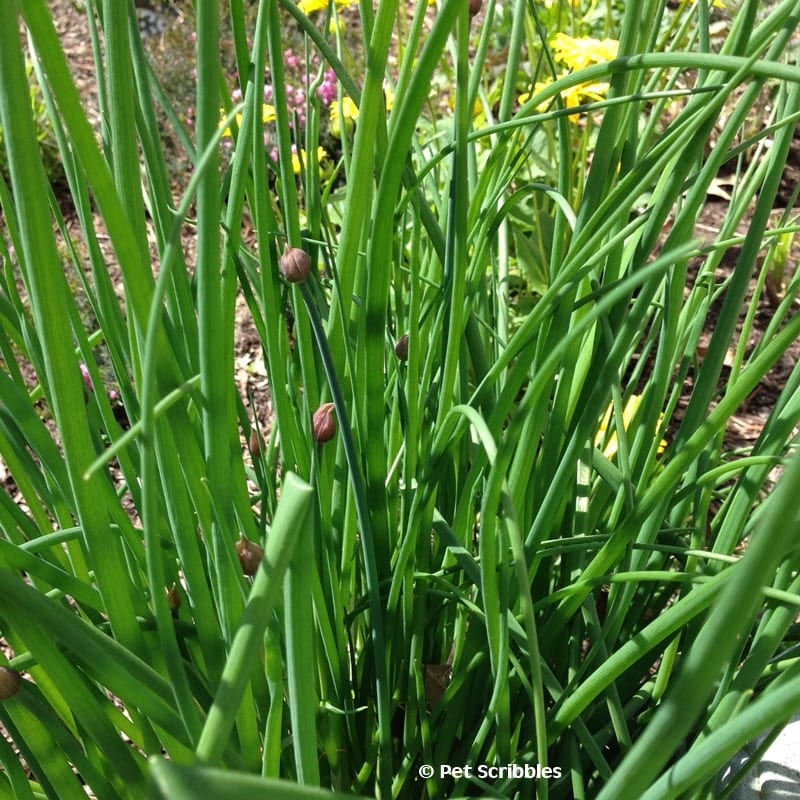Leopard’s Bane is an easy-care, early Spring-flowering perennial, blooming non-stop all season. The charming yellow flowers will put on a show every year! These are dependable bloomers and benefit our early pollinators too.

When most people think of yellow color in the Spring garden, Daffodils come to mind.
But that just means that most people haven’t yet heard of Little Leo Leopard’s Bane, an easy-care, early blooming perennial that never disappoints!
I first read about Leopard’s Bane in one of the many gardening books I purchased when we moved here, almost 8 years ago. (Has it been 8 years already? Where does the time go?)
Here’s all you need to know:
The full name — which you might see at your local garden center is commonly known as Leopard’s Bane or Little Leo Leopard’s Bane.
You might also see it as: Doronicum orientale Little Leo or Doronicum cordatum Little Leo.
- Doesn’t mind wet, moist soil (perfect after all of the snow we got this year!)
- It’s a perennial
- It provides gorgeous yellow blooms all Spring season long
- Does well in either full shade, full sun, or a mix of both
- USDA Zones 4 to 8 (conditions may vary where you live)
Translation? Buy this plant!
Leopard’s Bane plant features:
Little Leo Leopard’s Bane is one of the earliest perennials to bloom in our gardens. It pops up even before some varieties of Daffodils.
It blooms it’s heart out for months! Last year for example, ours began blooming by the start of April, and lasted until Memorial Day weekend!
The flowers look like yellow daisies and provide such a wonderful pop of color, especially in the early Spring!
Great for early pollinators. Just like the little buzzing guy below on the petals, early Spring pollinators will benefit from these pretty flowers.

My experience growing Leopard’s Bane
I planted it next to our Kramer’s Red Winter Heath, which is a kindred spirit: this Heath is also an early bloomer that puts on quite a Spring show every year!
While the Little Leo Leopard’s Bane is blooming, many of the other garden perennials begin to awake.
The ornamental onions (to the right, above) start working on their own purple buds.
The Alliums take over when Leopard’s Bane is finished.
This is how Little Leo looked (say that 10 times fast) on May 21st last year:
The only bit of care needed?
Trimming back the dead and dying flower stalks down to their bases.
The leaves continue to provide green color for awhile.
As our Leopard’s Bane begins to take a background role in the garden, its leaves are joined by the leaves of our Japanese Anemone plants.
The arrow below left is Japanese Anemone; the right arrow is Leopard’s Bane. (Click here to read why I love these Japanese Anemones!)
What happens after Leopard’s Bane is finished blooming?
The leaves of the plant will continue to fade into the background, and in some cases will almost die back to the ground over time. It isn’t even noticeable, as many other perennials are getting ready for their turn to shine.
Don’t worry: if you no longer see the plant in your garden, it is doing just fine! Trust me: it comes back the following year even prettier!
The arrow below is pointing at the Leopard’s Bane. Below it is the Heath I mentioned above, also finished blooming for the season. To the left is the Japanese Anemone. I love how they all sort of blend together!
For more yellow flowers in the garden, we’re looking forward to the Coreopsis flowers blooming all Summer long! Check out the Coreopsis buds in this photo below, taken over the Memorial Day weekend last year!
Our garden stars in June are the Ornamental Alliums and the bushy Dianthus plants. There’s some Salvia peeking out back there too!
We’re thrilled with our Little Leo Leopard’s Bane (see yellow arrow above), which kicks off our Spring garden season each year!
Where to buy
Keep Leopard’s Bane in mind as you shop for flowers!
In addition to garden nurseries, I’ve seen these pretty flowers more widely available each year at big-box garden centers like Home Depot and Lowes.
In fact, I snapped these pictures to show you what they looked like at one of the big-box retailers last year:


And if you don’t see it locally, definitely find it online and purchase it! As of this article’s published date, the following online plant catalogs have Little Leo in stock:
Seeds can also be purchased online, however I am not familiar with the success rate of growing them from seed.

If you add Leopard’s Bane to your own Spring garden this year, then you will have a front row ticket for next year’s charming, long-blooming Spring show!

Happy gardening!














thank you for sharing your beautiful garden and knowledge especially now as my garden is my safe place. stay safe.
Thank YOU for your comment, Tracy. Totally agree with you that our gardens are indeed our safe places right now. I spent yesterday outside, even though it was cold, weeding and cleaning up leaves for hours…just to take a break from everything. I think gardening — and just being outside in our gardens and backyards — will become essential to everyone as we go along. Thanks again for being here!